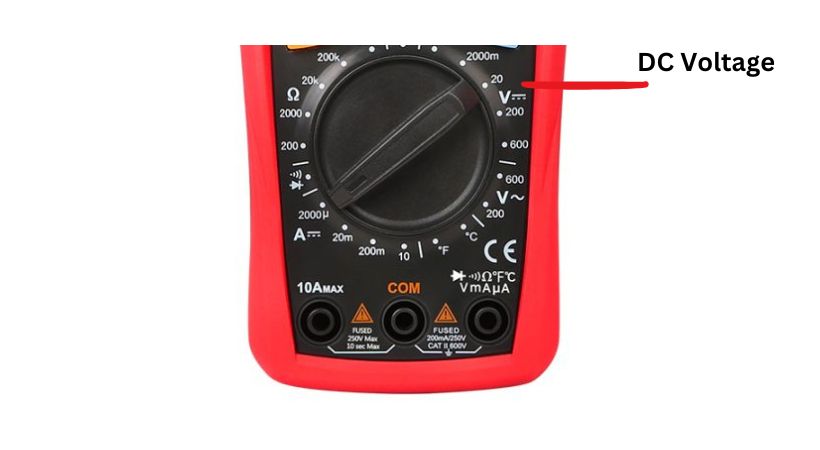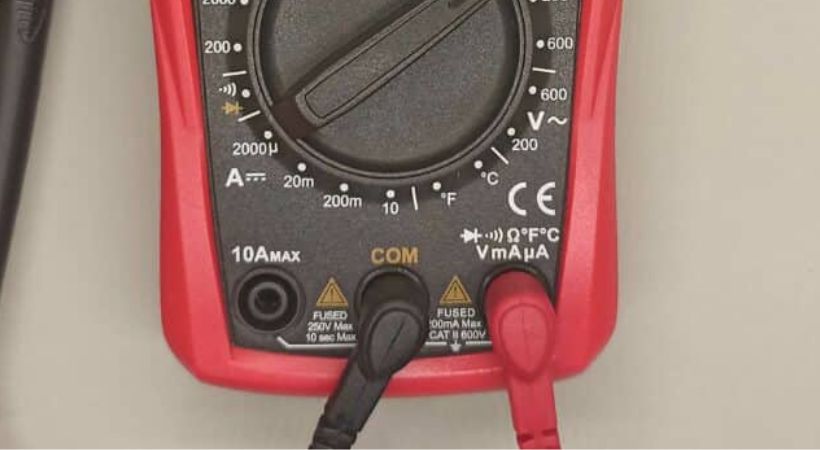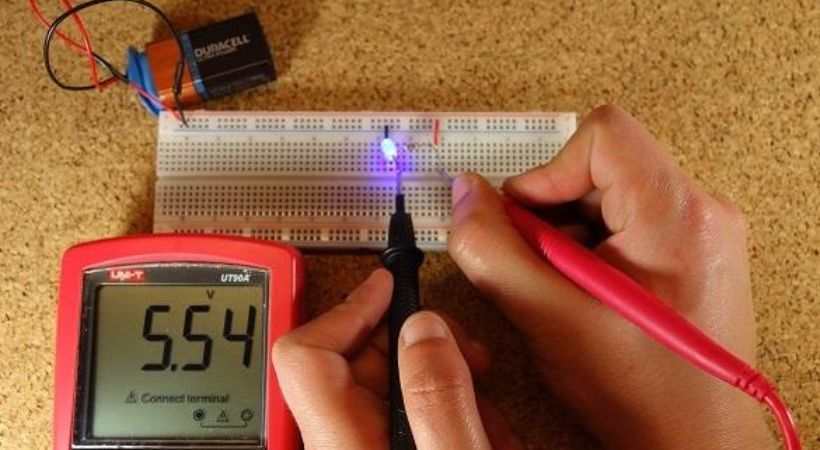Precise DC voltage measurement is essential in electronics to guarantee the efficiency, dependability, and security of electronic circuits.
DC voltage measurement is a very straightforward process, rotating the selection dial of the multimeter to DC voltage function, this is typically denoted by the symbol “V-” on the dial or display. Identify the points in the circuit where you want to measure the voltage. Connect the red probe to the point with a higher potential (positive) and the black probe to the point with a lower potential (negative). After the connection, the multimeter will display the result in a few seconds.
In this article, we will discuss DC voltage measurement using multimeter and the safety measures that should be taken.
DC voltage measurement
Within an electrical circuit, the constant, one-way flow of electric charge is referred to as direct current (DC) voltage.
DC maintains a constant flow of electrons from the negative terminal to the positive terminal of a power source.
This property of maintaining a constant current level of the DC voltage makes it ideal for powering electronic devices and systems that require stable and predictable electrical energy.
The common source of DC voltage is batteries, solar cells, and rectifiers. We measure the DC voltage in the circuit.
The measurement of DC voltage is essential for several reasons. Firstly, it provides critical information about the state of electrical circuits, allowing engineers and technicians to assess performance, diagnose faults, and ensure proper operation.
Secondly, accurate DC voltage measurement is crucial for maintaining system integrity and safety, as deviations from expected voltage levels can indicate potential hazards such as overloading, short circuits, or component failures.
Let’s discuss how you can measure the DC voltage while working on your electronics project or circuits.
A multimeter is a versatile tool used to measure current, voltage, and resistance. It also offers some other functions like capacitance, temperature measurement, and continuity testing features.
The multimeter has two most common types: analog and digital multimeter. The digital multimeters are considered more accurate and they are very easy to use.
Using a multimeter for DC voltage measurement is a straightforward process. Let’s talk about how can you measure the DC voltage using a multimeter.
Step-by-step guide
Achieving accurate DC voltage measurements requires attention to detail and adherence to best practices.
Here’s a detailed step-by-step guide for measuring DC voltage using a digital multimeter.
1. Safety precaution
Before beginning any electrical measurements, it’s essential to ensure your safety and the safety of your equipment. Make sure to:
- Wear appropriate personal protective equipment (PPE), such as safety glasses and insulated gloves.
- Ensure the multimeter is in good working condition and has the appropriate safety ratings.
- If working on a live circuit, take necessary precautions to avoid electric shock, such as de-energizing the circuit if possible and using insulated tools.
2. Set the multimeter
The next step is to Turn on the multimeter and set it to the “Voltage” function.

On most multimeters, this will be denoted by the symbol “V” with a straight line over it (indicating DC voltage) or “~V” (indicating AC voltage).
Ensure you’re selecting the DC voltage function if you’re measuring DC voltage.
3. Connect the probes
Connect the test leads to the multimeter.

The red lead typically connects to the terminal labeled “VΩmA” or “VΩ” (for voltage, resistance, and current measurements), while the black lead connects to the common (COM) terminal.
4. Test the multimeter
You can also test the accuracy of the multimeter before taking any further measurements. Select the resistance mode of the multimeter.
Keep the probes of the multimeter untouched, if the display shows “OL” or “1”, the multimeter is good otherwise the multimeter is bad.
The other sign of a good multimeter is that by touching the probes of the multimeter with each other, the multimeter should show zero resistance.
For a good and accurate multimeter, it must pass both of the above tests.
5. Select the voltage range
Now if you are working with a manual range multimeter, select an appropriate voltage range on the multimeter to match the expected voltage level of the circuit you’re measuring.
Start with a higher range to avoid overloading the multimeter and then adjust to a lower range for better precision if needed.
If your multimeter has an auto-range feature, you can skip this step as this type of multimeter selects the range automatically.
6. Circuit connection
Now, connect the test leads to the circuit under test.

Ensure proper polarity: the red lead should be connected to the higher potential point (positive terminal) and the black lead to the lower potential point (negative terminal).
7. Take the measurement
After connecting, the multimeter will display the result in a few seconds. If using a digital multimeter, the voltage reading will be displayed numerically.
If using an analog multimeter, observe the needle’s deflection on the scale to read the voltage value.
8. Record the measurements
You can repeat the process for different voltages and record the measurement for further analysis and circuit design.
Common technical mistakes
When measuring DC voltage using a multimeter, several common technical mistakes can occur. Here are some of them:
- Incorrect range selection, selecting the wrong range can lead to inaccurate readings or even damage the multimeter.
- Incorrect probes connection. If you connect the red probe to the ampere terminal of the multimeter instead of the voltage, it will lead to a short circuit.
- Improper probe placement. The multimeter probes need to be connected correctly to the circuit points where you want to find the voltage level to obtain accurate measurements.
- Exceeding the maximum range of the multimeter can damage the multimeter or create safety hazards. Make sure to check the specifications of your multimeter and use it within its voltage limits.
These are some technical mistakes that can occur while measuring DC voltage.
To avoid these technical mistakes, it’s important to carefully understand the measurement procedure, and double-check the connections and settings before taking any voltage measurements.
Conclusion
Measurement of the DC voltage in a circuit is essential to understand how the circuit is working and how we can modify it.
By understanding the principles, utilizing the right tools, and employing best practices, accurate voltage measurements can be achieved consistently.
The most common and accessible tool for DC voltage measurement is the multimeter. All you do is to:
- Set the multimeter voltage function
- Selecting the range
- Connect the probes to the multimeter.
- Make the connection of probes with the circuit point where you want to measure voltage.
- After that, the result will be displayed on the screen.
These are the simple steps for DC voltage measurements.
Whether designing circuits, debugging systems, or conducting experiments, proficiency in DC voltage measurement will enhance your skills and contribute to the success of your projects.
I hope you’ll enjoy this article.
Thank you…
Other useful posts:
